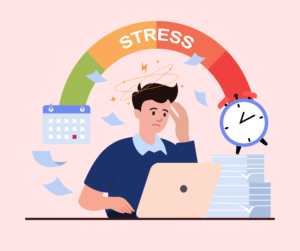Feeling down occasionally is a normal part of life, but when a low mood persists, it can impact daily activities, relationships, and overall well-being. Various factors, including stress, lifestyle habits, and even seasonal changes, can contribute to mood disturbances. In this blog, we will explore common causes of low mood and effective strategies to improve mental health.
Understanding Low Mood and Mood Swings
A low mood is characterized by feelings of sadness, irritability, or a general lack of motivation. In many cases, these feelings fluctuate, leading to mood swings—sudden shifts in emotions that can make it difficult to maintain balance in daily life.
While occasional mood swings are common, frequent mood changes may signal an underlying issue, such as Seasonal Affective Disorder (SAD), depression, or anxiety.
Seasonal Affective Disorder (SAD) and Mood Changes
During the colder months, reduced exposure to sunlight can lead to Seasonal Affective Disorder (SAD), a condition that affects energy levels and mood. Symptoms of SAD include:
- Persistent sadness or low energy
- Increased irritability or mood swings
- Difficulty concentrating
- Changes in appetite and sleep patterns
To combat SAD, exposure to natural light, light therapy lamps, and outdoor physical activities can be helpful.
Practical Ways to Improve Mood
While mood changes are a natural part of life, adopting certain habits can help stabilize emotions and promote mental well-being. Here are some effective strategies:
1. Prioritize Mental Health Support
Seeking mental health support is essential when dealing with persistent low mood. Talking to a trusted friend, joining a support group, or seeking professional counseling can provide relief and guidance.
2. Practice Mindfulness and Relaxation
Mindfulness techniques, such as deep breathing, meditation, and journaling, can help manage stress and negative thoughts. Engaging in mindfulness exercises regularly can lead to increased emotional stability and reduced anxiety.
3. Engage in Physical Activity
Regular physical activity is a powerful mood booster. Exercise releases endorphins, which help combat stress and improve overall mental health. Activities such as walking, jogging, yoga, and dancing can enhance energy levels and promote emotional well-being.
4. Follow a Balanced Diet
A balanced diet plays a crucial role in mental health. Nutrient-rich foods, such as leafy greens, lean proteins, and omega-3 fatty acids, support brain function and mood regulation. Avoiding excessive sugar and processed foods can also help stabilize mood.
5. Improve Sleep Hygiene
Poor sleep can significantly impact mood and energy levels. Practicing good sleep hygiene, such as maintaining a consistent sleep schedule, avoiding screens before bedtime, and creating a relaxing nighttime routine, can improve sleep quality and overall mood.
6. Build Strong Social Connections
Maintaining a healthy social connection with friends, family, and support groups can provide emotional support and reduce feelings of loneliness. Engaging in social activities, even virtually, can improve overall well-being.
7. Consider Professional Counseling
If low mood persists despite lifestyle changes, seeking professional counseling is a valuable step. Therapists and mental health professionals can provide personalized strategies to manage mood and address underlying issues.
Final Thoughts
Everyone experiences periods of low mood and mood swings, but adopting healthy habits such as physical activity, mindfulness, a balanced diet, sleep hygiene, and social connection can improve mental well-being. If symptoms persist, seeking mental health support or professional counseling is important for long-term stability.
Taking small steps each day can make a significant difference in how we feel, leading to a happier and healthier life.




